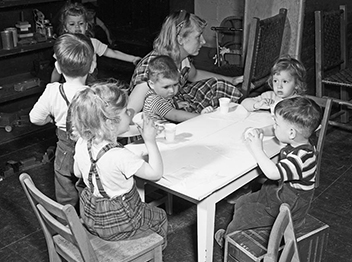Does Hoosier Courts close for snow days?
The short answer is that as long as Indiana University Bloomington is open, we are open.
Does Hoosier Courts only enroll families affiliated with Indiana University?
Because Hoosier Courts is part of the university, first priority is given to the children of Indiana University students, faculty, and staff. However, when our waiting list of IU affiliated families is exhausted, we open up enrollment to the outside community. Each year we have at least a couple of families who have no connection to the university.
What if my child doesn't know any English?
Many of the children enrolled at Hoosier Courts come from countries other than the U.S. and do not know any English when they start. Our teachers have vast experience working with children who do not know English. They will be patient and understanding. When they speak to your child, they will use gestures, facial expressions, context, and other non-verbal cues along with their words to help them understand. Fortunately, young children learn a second language much more quickly and easily than do adults. Before long, your child will be speaking English fluently.
Where does my tuition money go?
Almost 80% of our budgeted expenses each year are allocated to cover salaries, hourly wages, and benefits for our staff. We know that one of the most reliable indicators of quality in early childhood programs is a low teacher to child ratio. Minimum state licensing standards in Indiana require only two adults in a classroom with 20 preschool children. Most programs in Bloomington, Indiana, adhere to this ratio. At Hoosier Courts, however, we are committed to doing better than minimum standards require. Each day there are three or four adults in each of the three classrooms of 20 children. There are two co-teachers, most of whom have at least a bachelor's degree in early childhood education or a related field. In addition, there is an assistant teacher, usually an Indiana University student, who works under the direct supervision of the teachers and the director and who receives on-going training in topics that relate to early childhood education and development.
Having so many adults in the classroom allows us to more consistently give children individual attention. For example, there is almost always an adult available to sit down and read stories to individuals or small groups. We also have the luxury of stationing some adults indoors and others outdoors so that children can move freely between the classroom and playground.


 Hoosier Courts Nursery, 1949
Hoosier Courts Nursery, 1949